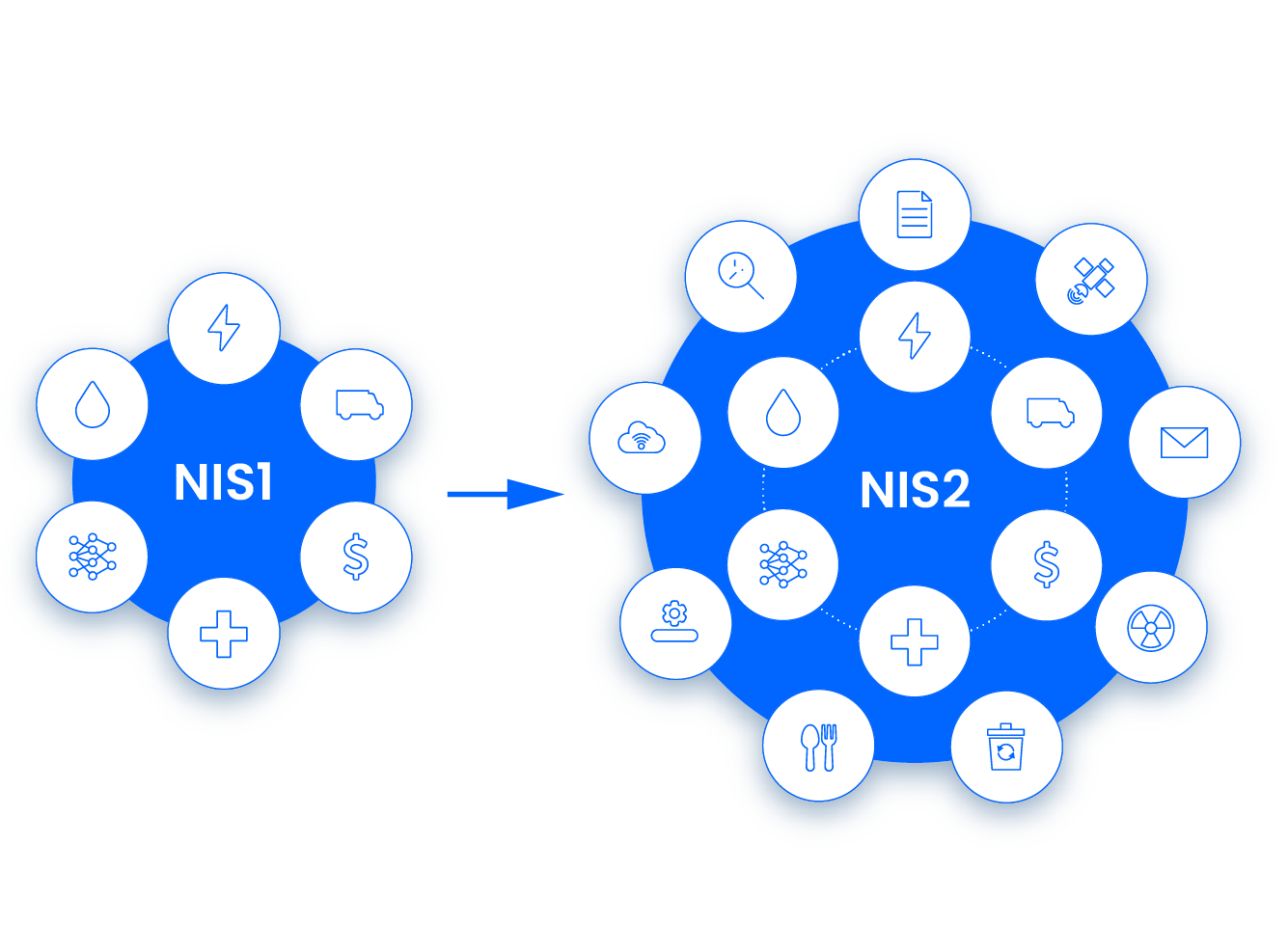The NIS2 Directive Explained
Prepare your organization for NIS2 compliance with a comprehensive overview of the NIS2 Directive.
NIS2: Europe’s Most Extensive Cybersecurity Directive To Date
The NIS2 directive is the most comprehensive European cybersecurity directive yet.
With stricter requirements for risk management and incident reporting, wider coverage of sectors, and more hard-hitting penalties for non-compliance, hundreds of thousands of EU organizations will need to reassess their cybersecurity posture.

160K+
Estimated companies affected by NIS2
€10MM
Maximum fine for NIS2 non-compliance
15
Number of sectors covered by NIS2 Directive
Sectors Affected By The NIS2 Directive
The NIS2 directive expands coverage from the original 7 sectors under the NIS directive, adding 8 more for a total of 15 sectors. To access sector-specific NIS2 information, simply click on one of the sectors listed below.
What Do You Want To Know?
White Paper By Uniqkey
Speed Up Your NIS2 Research With This Actionable 14-page White Paper
Busy doing research? Download this 14-page NIS2 white paper created by Uniqkey to get a concise breakdown of NIS2 and learn how improving your access security can lead you to compliance.
